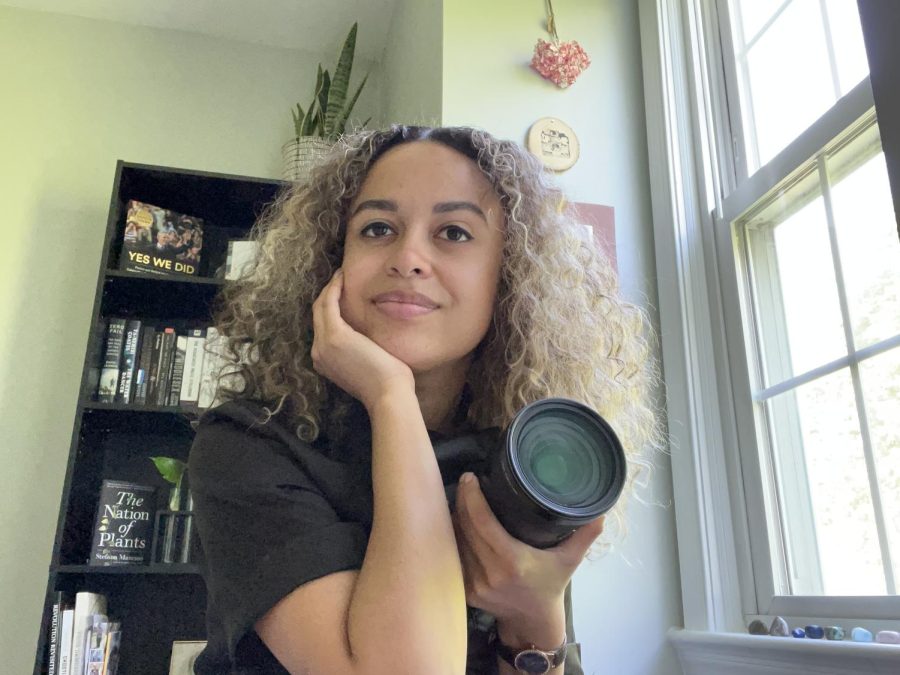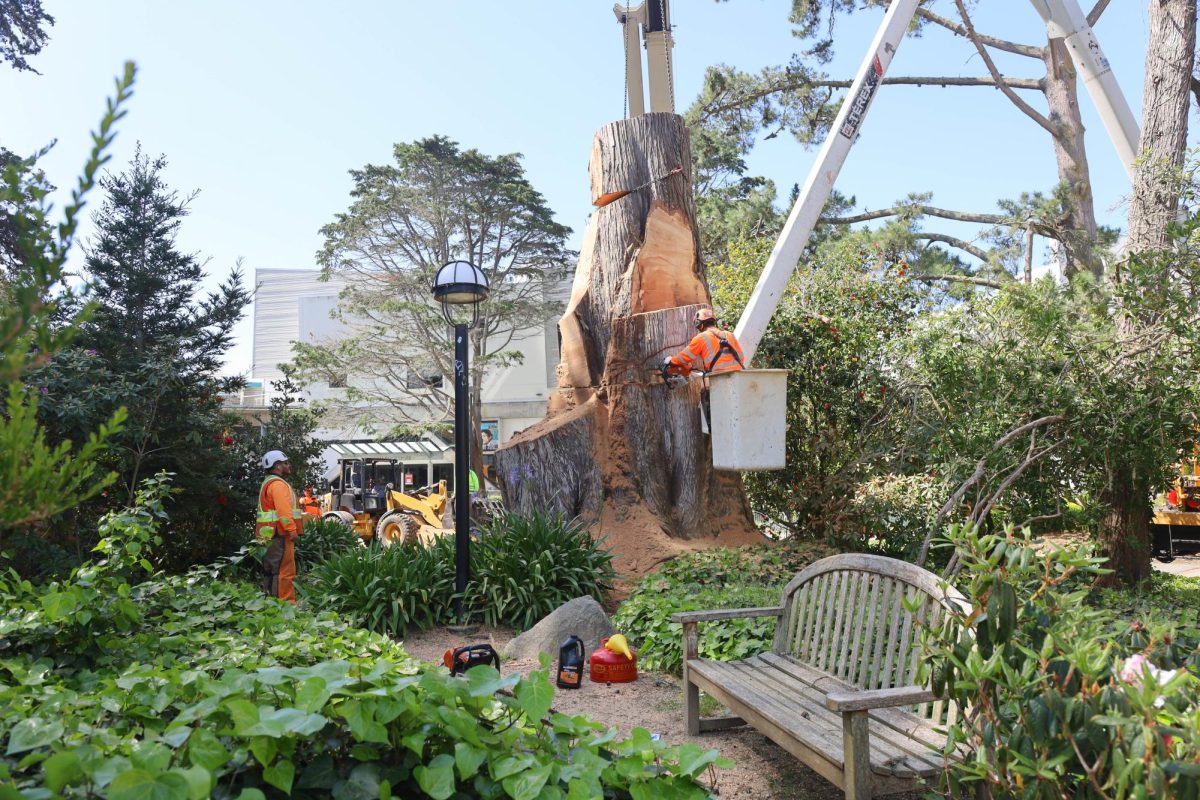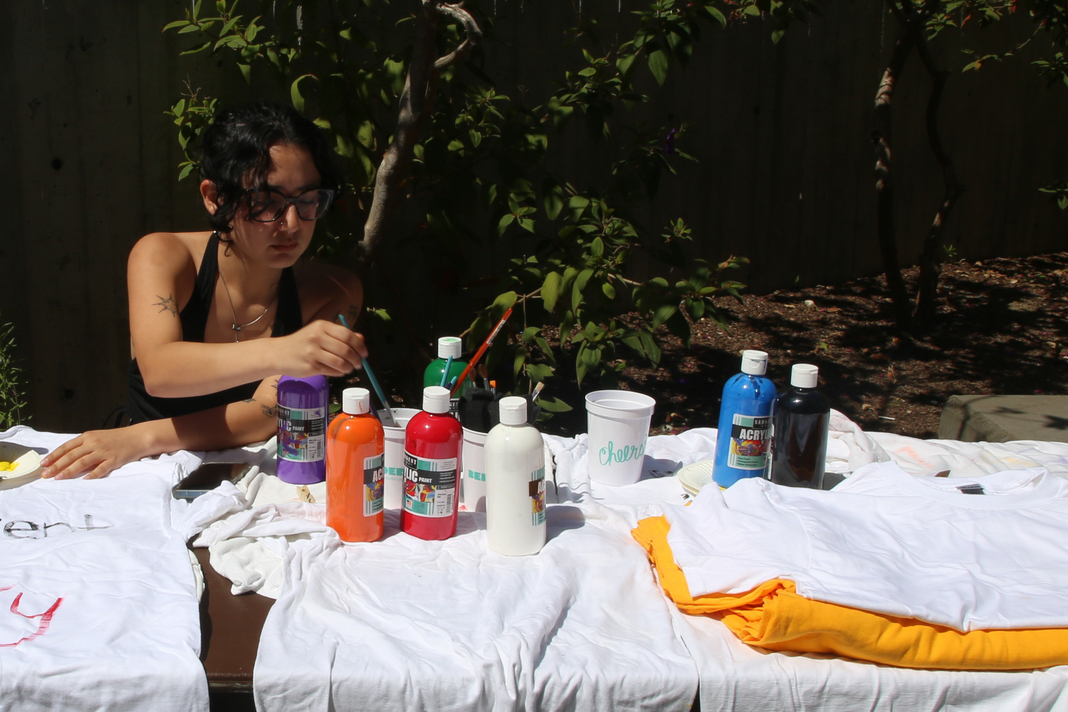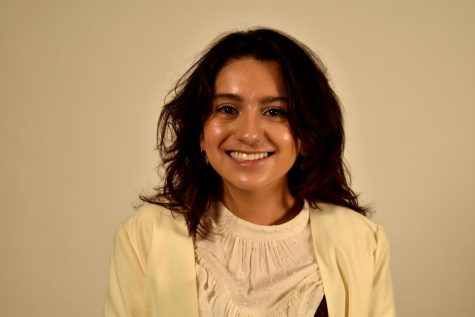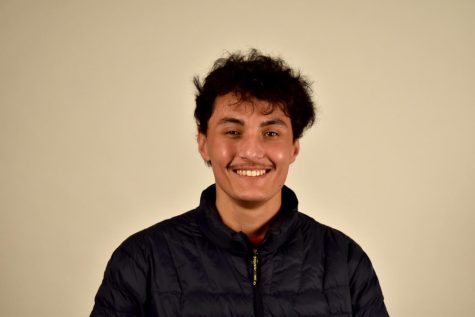SF State alumna Sarahbeth Maney (class of 2019) made headlines for a viral photo she took of the daughter of Supreme Court Justice Associate Ketanji Brown Jackson during the justice’s confirmation hearing.
Before she became a distinguished photographer for the New York Times, she was a SF State photojournalism student.
Maney grew up in Martinez, and had family in Oakland and Alameda. As a Bay Area native, she felt it was important to document her community while staying near her family. It was a big step for Maney, as she became the first in her family to attend college.
A recent graduate of the SF State Journalism department, Maney has worked as the New York Times inaugural Washington, D.C photo fellow since 2021.
In this Q&A with Maney, she discusses her experience in SF State’s photojournalism program and her post-graduation life.
Q: Tell me about the New York Times fellowship program, how did you hear about it?
A: Before the fellowship program existed, there was an internship program. During freshman year in college, I started following every single intern that was accepted to the program and the work that they were doing.
I was really paying attention to [those] that were selected because I knew that it was something I wanted to do and it took me a long time to get to the point where I felt like I was prepared to take that step in my career.
I applied during my junior and senior year and I was rejected both times. Each time I was rejected, I would look at my portfolio and the work [chosen] and challenge myself.
Q: What was the first big hurdle you had to overcome in a professional setting?
A: Oh my gosh, there have been so many! It’s hard to even remember or think of a specific situation because on a daily basis I’m usually the only woman of color. Especially starting my career, that was the norm for me. So it was really difficult for me to try to break into journalism while not feeling like I had people around me who could relate to my experience. I’m talking about when I was working in the field. It was hard for me to look around the room and feel like there was anyone really advocating for me or understanding what it was like for me to be in the room where I didn’t see people who looked like me doing photojournalism work.
And I was kind of the only one most of the time, so I think that was just the hardest part- learning how to navigate those spaces while working. I had always been used to that growing up and being in classrooms where being in predominantly white classrooms and I had to learn how to apply that to my work as well. I think that was probably the biggest challenge.
Q: What was the biggest hurdle you had to overcome in college?
A: [I would say] the hardest part of entering college as a first-generation student is definitely finances. When I told my parents I wanted to go to a state school, they told me that we wouldn’t be able to afford it. I really relied heavily on scholarships, FAFSA and the Cal grant. I received some scholarships through the journalism department that really helped me through college without me having to worry about the additional stress of financial need.
Especially as students in the journalism program, being a journalist is a full-time job. It’s a full-time commitment and you really dedicate your life to being a journalist when you sign up for it. Being secure financially was like a huge weight lifted for me.
Q: Is there any reason why you applied to SF State?
A: I was really drawn to the photojournalism program at San Francisco State because it’s one of the top 10 in the country for state schools. Being a Bay Area native myself, it was really important for me to go to a school where I could be close to my family but where I could also document my community and document things that were familiar to me and my experience. That was the main reason why I chose San Francisco State.
When I entered college, I was really unsure of what to expect because I was coming in as a first-generation college student. No one else in my family had gone to college before. It was a big leap for me.
Q: How long were you on staff with Golden Gate Xpress?
A: [I did] two semesters of pub lab. The first semester I was a photographer and then the second semester I was in the photo (editor) position. I think I really enjoyed the photo editing position because it taught me what photo editors do. So it was just interesting to see another side because it taught me how we’re all working as a team and how all of these moving pieces come together.
It was a really positive experience that made me more well-rounded as a photographer.
Q: What part of the Bay Area did you grow up in? And what do you miss?
A: I grew up in Martinez which is in the East Bay area. I have family in Oakland and Alameda. I was raised in the Bay Area and I think that was a really unique experience because I got to see a lot of different parts of the bay and learn about different cultures within the Bay Area. I think that’s really what I miss the most is the culture and just being able to document a community that I understand.
When I’m home, I will definitely be making a road trip to Tahoe and Stinson Beach while I’m out there. Those are places where I’m able to just go with friends and decompress for a weekend.
Q: Is there any way you think college didn’t prepare you for the field?
A: Honestly, I feel like the program prepared me really well because of my education. I know what it’s like being in the journalism industry.
Scot (Tucker) and Kim (Komenich) were my two photo professors. The cool thing about having Scot as a professor is once in a while, I would actually see him out in the field. So it was very cool to learn from him but also still see him working in the field; I thought that was very inspiring. Then, of course, Kim is just really an advocate for photojournalists trying to break into the industry. They both helped me a lot with connections and internship advice and they’ve always been just incredibly supportive.
Q: Were there ever points in your career where you felt disillusioned and if so, what got you back into the groove of things?
A: I think that over time, as a journalist, you have to be comfortable being uncomfortable. You also have to be okay with receiving rejections and you just have to keep pushing through it. Work toward that goal no matter how long it takes.
I think that the thing about journalism is there’s no one roadmap to a single destination. There’s so many routes you can take in our industry to get to where you want to be, so that’s just my little piece of advice.
Q: Are there any misconceptions you had about being a journalist?
A: Oh my gosh, absolutely. I had to learn how to get over the fear of approaching random people on the street. I thought that when I applied to the journalism program, that the way it worked was I was going to be given assignments and I was going to (know) what I was doing all of the time in terms of assignments but I had to get over my own fear and anxiety of finding my own stories, reaching out and calling subjects on the phone and interviewing random people on the street.
I remember Laura Moorhead’s reporting class. I think it was one of the most formative classes for me as a young journalist because it really pushed me outside of my comfort zone. It gave me the skills and the confidence to do what?.
I was definitely not expecting the intensity of it, but now it’s just part of my everyday routine. I’ve become more comfortable with doing that over the years so now it’s one of my favorite parts of my job.
Q: What are the biggest differences between the Bay Area and the east coast?
A: Being in D.C. often feels like I am in a bubble and that I’m closed off from the rest of the world. Covering politics is very specific and very different from my coverage at home. At home, I’m covering the ways policies are impacting people’s lives and in D.C. I’m literally in the rooms where those decisions are being made. So I say that D.C. and the Bay Area are like polar opposites. After my fellowship ends, I’ll be joining the Detroit Free Press, which is another polar opposite of D.C. I have enjoyed covering politics, but I’m also looking forward to working somewhere that I’m able to invest in the community and build meaningful connections.




